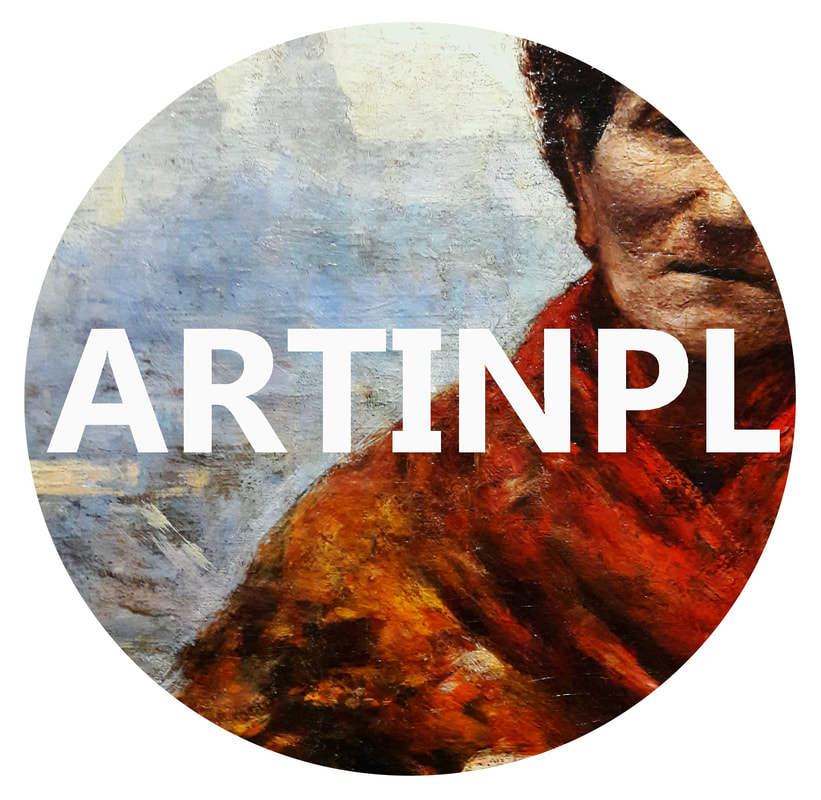|
Who is the mysterious girl dressed in contemporary, although a bit out of fashion at the time of creation, Spanish dress? The portrait is a so-called pendant, one of two paintings hung together with similar or respective topic. In portraiture usually depicting couples, man and wife, mother and daughter, father and son, brother and sister, in opposite poses. Basing on dimensions (134 x 98 cm), style, topic and costume similarity, the portrait of unknown Princess is undoubtedly a pendant to portrait of Prince Sigismund Casimir Vasa preserved in the Austria’s Ambras Castle collection (division of Kunsthistorisches Museum in Vienna, inventory number 8198) and attributed to Dutch painter at the Polish court in Warsaw, Peter Danckerts de Rij. Young prince, about 4 years old, was depicted in a fancy polish costume – green żupan, standing on a loggia (arcaded terrace) of Ladislaus IV’s favourite residence in Warsaw facing Vistula River. Sigismund Casimir was the only son of the King by his first wife Archduchess Cecilia Renata of Austria. The portrait is recorded in the Ambras Castle inventories as far as the year of 1663, hence it could be a gift of the King of Poland to his Austrian cousins. The reason why the portrait of Polish princess does not preserved in the same location might be that she was illegitimate daughter of the King, who could not be introduced to the imperial family. It might have been in the collection of the Polish Vasas till 1673, when John II Casimir’s belongings were put on sale in Paris. Ladislaus’ Queen became pregnant three times during her marriage. Apart from Sigismund Casimir (1 April 1640), she gave birth to a daughter Maria Anna Isabella on 8 January 1642, who died one month later and on 23 March 1644 Cecilia Renata gave birth her third child, a stillborn daughter. She died next day as a consequence of an infection. None of king’s siblings had a child in 1640s, consequently the portrait could not depict a living, legitimate member of the Royal family.
The only confirmed illegitimate child of the King, Władysław Konstanty (Ladislaus Constantine), was born around 1635. Although the male children were frequently depicted in long dresses in baroque era, he was approximately 10 years old at the time when the portrait was executed, hence too old to wear such costume. The features of the sitter are also more feminine and typical for young girls of that time. It is possible then, what was suggested several times, that Ladislaus had a daughter by his mistress Jadwiga Łuszkowska born in about 1640. The portrait can be considered as unprecedented depiction of illegitimate child together with "prince of the blood" in Habsburg circle, and it is a testimony of great affection of the King to his children. Due to great similarity of contemporary Polish and Hungarian costumes, it is also highly probable that pictures represent not Sigismund Casimir Vasa and his alleged sister but eldest son of Holy Roman Emperor Ferdinand III and his first wife Maria Anna of Spain - Ferdinand (1633-1654), made king of Bohemia in 1646 and king of Hungary and Croatia in 1647 and his sister Mariana of Austria (1634-1696), future queen of Spain, who were frequently depicted together at that time. The Emperor's son was depicted with similar Hungarian hat and similar dog in 1634 at the age of 1 year.
(1) Portrait of Archduke Ferdinand of Austria (1633-1654) in Hungarian costume by Anonymous, 1630s, Ambras Castle in Innsbruck,
(2) Portrait of Archduchess Mariana of Austria (1634-1696) in Spanish costume by Anonymous, 1630s, Museu Sa Bassa Blanca, (3-4) Portrait of Archduke Ferdinand of Austria and his sister Mariana of Austria by Anonymous, 1630s, Bavarian State Painting Collections, (5-6) Portrait of a boy and a girl, most probably Ferdinand of Austria and his sister Mariana of Austria by Frans Luyckx, 1630s, Museo Nacional del Prado, (7) Detail of portrait of Maria Anna of Spain and her son Ferdinand by Anonymous, 1634, Kunsthistorisches Museum, (8) Portrait of Pál and Orsolya Esterházy by Anonymous, 1652, Forchtenstein Castle.
See more pictures of Polish noble costume on Pinterest - Artinpl and Artinplhub
Comments are closed.
|
Artinpl is individual, educational project to share knowledge about works of art nowadays and in the past in Poland.
If you like this project, please support it with any amount so it could develop. © Marcin Latka Categories
All
Archives
April 2023
|




